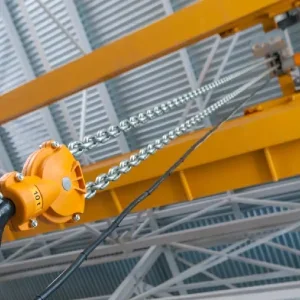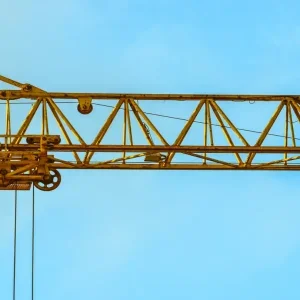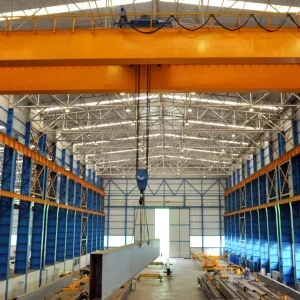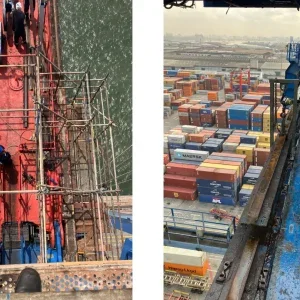In terms of improving standards of safety, inadequate specification by some buyers of lifting equipment represents a real obstacle to progress. Getting this first step in the procurement process right is clearly critical to the safety of subsequent lifting operations. Unfortunately, all too many suppliers report that the information they receive from potential customers often amounts to little more than a vague description of the product type required and a safe working load.
Safe lifting clearly demands a more professional approach. Consequently, over the next few issues, this section will aim to provide a series of practical buyers’ guides for some of the major types of lifting equipment. While it cannot hope to be comprehensive, it should at the very least provide a useful starting point for those responsible for the hire and purchase of lifting equipment.
The series begins with general purpose slings. A diverse range of these products is now available but, in terms of correct specification, it is quite possible to outline the key considerations that are common to all. When selecting a sling for a particular task, the variables will include the sling type (ie material), configuration (ie number of legs), terminal fittings (eg hooks) and the conditions in which it will be used and stored.
Sling types
Sling types fall into three broad categories: chain, wire rope and textile. Within each category are a number of variants. Many countries have long established national standards for all these types, but the good news for buyers (in Europe at least) is that many are now (or soon will be) covered by harmonised European Standards. Essentially these are written to support European legislation and, as such, can be relied upon to provide a high level of safety. Table 1 lists the published British and European standards for each of the major sling types.
Configurations and terminals
Depending on the type in question, slings are generally available in five basic configurations: single, two, three and four leg, and endless. There are also a variety of terminal fittings to choose from. Depending on the sling type, the choice at the upper terminal is usually restricted to that of a link or a soft eye.
However, at the lower terminals, in addition to the standard sling hook, there is a choice of fittings, many of which are designed to suit specific loads. These terminal fittings include pipe hooks, bale hooks, foundry hooks, can hooks and case/carton grabs. Where appropriate, the use of such purpose-designed fittings is highly recommended.
Making the right choice
How should a buyer decide which type and which configuration to use? Each has its own particular characteristics and the best choice will depend to a great extent on the nature of the load.
Chain is generally the most versatile option. It is very flexible, and therefore able to wrap around the load. It is also durable and, if the sling is fitted with shortening clutches, the leg lengths are easily adjustable to suit the particular load. Chain slings tolerate a wide range of operating temperature. By selecting the appropriate grade and rating, this can be extended even further.
Wire rope offers an economical alternative to chain for many applications and also has advantages of its own. It is easier to feed under a load and slings made from galvanised rope and thimbles are more tolerant of marine or similar environments. They are at their most advantageous when the legs are in a straight pull – suspending a spreader beam, for example. If wrapped around a load, they inevitably become permanently set to the shape of the load, unless a large radius can be maintained. Generally the length of the legs cannot be adjusted by the user, although special top fittings are available for two leg slings, which allow one leg to be shortened as the other is lengthened. This is useful if adjustment is required to match the centre of gravity of the load.
Textile slings include webbing slings, roundslings and fibre rope slings. Compared to wire rope or chain, all have the advantage of being both light and less likely to damage loads with a delicate surface. Webbing slings are made from man-made fibres and spread the load over a wider area. They are therefore particularly suitable where such support is required. Although they will readily bend to wrap around a load, webbing slings are often stiff enough to feed under or through a load. The most widely available types are single leg with soft eyes, but they are also available with metal end fittings, which are advantageous on the widest slings. If required, webbing slings can also be made into multi-leg configurations.
Roundslings are also manufactured from man-made fibres and consist of a hank of multiple turns, with the ends of the hank joined together and the whole protected by a woven tubular sleeve. They are very flexible and will flatten onto the load, spreading the support area in the process. Although roundslings can be made into multi-leg configurations with terminal fittings, this is rare. Their real advantages come from being light to carry, and the ability to be wrapped or double wrapped around a load and choked to grip it securely.
Fibre ropes are available in a wide range of natural and man-made fibres. Size for size, these can be ranked in terms of strength (in ascending order, with the weakest first) as follows: sisal, manila, polyethylene, polypropylene, polyester and polyamide (nylon). With the advent of the roundsling, fibre ropes have fallen from popularity. However, being available in a wider range of materials, they do offer greater freedom to select the type best suited to the environment.
All the materials used in textile slings are susceptible to damage from sharp edges, have a relatively limited range of operating temperature and provide varying resistance to chemical attack and prolonged exposure to ultraviolet light. Natural fibres are also subject to rot and mildew from dampness.
Selecting the correct configuration
Configuration will be influenced by the type of load or loads being handled. For example, a single leg sling might typically be used for a load which has a single lifting point, or slung in a choke hitch, or in combination with another to effectively create a two leg sling. Two leg slings are suitable for a wide range of load types, while the three leg option is commonly used for circular or irregularly shaped loads. Four leg slings are generally suited to square or rectangular loads. All multi-leg slings are versatile in that not all the legs need be used, provided this is allowed for in the rating. Endless slings are usually employed in choke hitch.
Sling ratings
Correct rating of slings is another vital stage of the specification process. The standard rating of all slings assumes certain conditions of use, including environmental conditions (eg temperature), the manner in which the sling is attached to the load (eg straight leg or choke hitch), and operational conditions (eg equal share of load between the sling legs, avoidance of shock loading). If the actual conditions vary from these, then due allowance must be made. The most common allowances required are for use in choke hitch, for when not all sling legs are in use and where the load is not equally shared between the sling legs. Generally this is done by specifying a sling of appropriately higher capacity.
Detailed explanation of sling rating could be an article in itself. Suffice to say that buyers must always bear in mind that when a multi-leg sling is used with the sling legs at an angle, the load in the individual legs will be increased as the angle to the vertical becomes greater. Harmonised European Standards use a rating method known as ‘uniform load’. This is undoubtedly the most straightforward approach, but for the foreseeable future buyers and users may also encounter equipment marked according to the trigonometric method. For a comprehensive explanation of sling rating, buyers should refer to a suitable reference document, such as the LEEA’s Code of Practice for the Safe Use of Lifting Equipment (COPSULE) or consult a lifting engineer.
Even for a product as apparently straightforward as a sling, the importance of correct specification should never be underestimated. Slings may be one of the simpler elements of the lifting equipment family, but typically provide the only direct connection with the load. Unfortunately, too many companies seem unwilling to invest much time or money in this critical yet relatively inexpensive item. As a result, it is all too common to trace the causes of accidents back to inappropriate selection and/or use of a sling. A more professional approach to specification is therefore a vital first step in any safe lifting policy.






